How to Sell on Amazon Europe: Everything you need to know in 2025
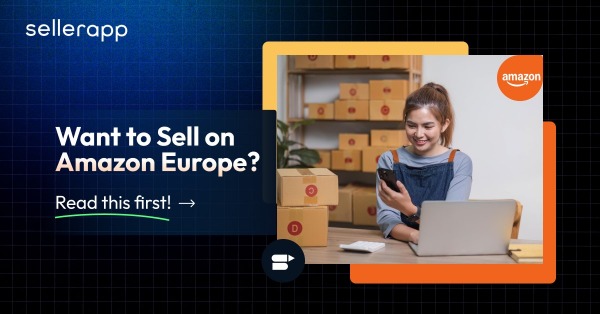
If you are wondering how to sell on Amazon Europe, you’d be shocked to find out that there is a growing consensus in the industry that the European e-commerce market will surpass $700 billion by 2027, driven by an increasing number of buyers online.
Amazon’s European marketplace is a huge, ever-changing environment with an immense scope for both new business sellers and seasoned vendors.
As European e-commerce continues to flourish, the continent has emerged as a key location for companies looking to expand or broaden their customer base. There is a growing consensus in the industry that the European e-commerce market will surpass $700 billion by 2027, driven by an increasing number of buyers online.
Despite the significant benefits, there are a number of challenges to accessing the European Amazon marketplace. The obstacles that the sellers have to comprehend include language barriers, VAT complications, and logistics.
In this article, we will cover the fundamentals of entering the European Amazon marketplace, how to sell on Amazon Europe, and what mistakes to avoid. This article will help you navigate the complexities and understand the potential of selling throughout Europe, regardless of your level of experience or desire for expansion.
Why Sell On Amazon Europe
As an emerging or seasoned entrepreneur expanding, you need to know that Amazon’s European marketplace offers you diversity and significant potential in terms of both profitability and scale. You can begin with selling in countries such as Spain, France, Germany, and the UK. Although you’ll have to jump through a few more hoops in terms of compliance, establishing product-market fit, and tackling a language barrier, there’s only upside to this expansion.
Typically, seasoned Amazon sellers tend to expand to Germany as it’s the most profitable marketplace in Europe. Additionally, there are other benefits. Especially, in terms of logistics, as its central location helps you effectively expand your e-commerce business across Europe.
Now, understanding the different marketplaces is going to be the key to your success as a supplier. Moreover, you have more than 20 countries (Spain, Germany, Italy, Netherlands, and many more) with potential customers to increase sales volume and revenue in Amazon Europe.
When it comes to the question of what to sell on Amazon’s European marketplaces, think of products with low competition that can help you stand out from the crowd. For example, portable heated blankets. What makes it unique? There are heated blankets, but those are targeted towards home use, bulky, and not easy to carry, making them unreliable when travelling.
Portable heated blankets have fewer sellers and a potential customer demand. It can also gain potential growth in the travel industry as the portable blankets can be carried anywhere, making them travel-friendly. Most importantly, products like this tend to be effective as it’s relatively cold across the continent, ensuring that there will be a stable demand.
Understanding Amazon’s European Marketplaces
Before you jump in and set up your business, it is essential to understand the European marketplace. If you are a new entrepreneur or trying to expand your business, it is crucial for you to understand Amazon’s European Fulfillment Networks. Why is it crucial? Well, Amazon’s European Fulfillment Networks serve as an allowance to the sellers already associated with FBA (Fulfillment By Amazon). Let’s break it down for you:
With Amazon EFN, sellers can store their inventory in any of Amazon’s Fulfillment Centers and sell it across Europe to any country. You can ship your products to any of the network countries, such as the UK, Spain, Germany, and other parts of Europe.
For customers, the Amazon EFN provides an incomparable shopping experience. With access to numerous products, customers are able to find what they need with fast delivery, making shopping easier for them.
Additionally, language can be a crucial barrier before you set your business because of the diverse linguistic landscape in Europe. Providing customer support in the local language may not be a necessity legally, but it can significantly improve your sales and overall customer experience.
On the other hand, the listing copy of the product should be in the language of the country where it has been sold to ensure compliance with local regulations.
How to set up Account & Legal Requirements
All set to sell on Amazon Europe? Let’s begin with how to get started and what the legal criteria that is required for selling in Europe. First, you have to:
Step 1: Create A Seller Account
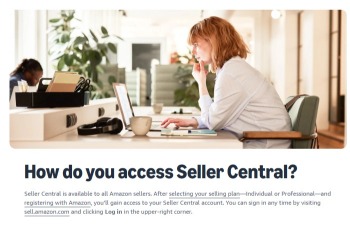
Start by creating an account in Amazon’s Seller Central for your Amazon European marketplace. Depending on your sales volume and business goals, decide on a selling plan, whether it is an individual or a professional plan. If you already sell on Amazon with a Professional selling account, create a regional Europe account. You can link to your existing email address for this.
Provide your business information.
Give details about your business, including the legal structure, address, and the name of your firm.
Verify your identity
Provide necessary documents such as identity proof and other government IDs for you to get verified as a seller.
Choose a Fulfillment method.
Decide between FBA (Fulfilment by Amazon) or FBM (Fulfillment by Merchant). For FBA, the Amazon stores handle shipping, packing, and order fulfillment for your products. FBM typically means that the seller or the merchant manages these tasks on their own.
You can also use Amazon’s Pan-European FBA to distribute your units in multiple European countries without any additional cost.
Seller fulfilled Prime
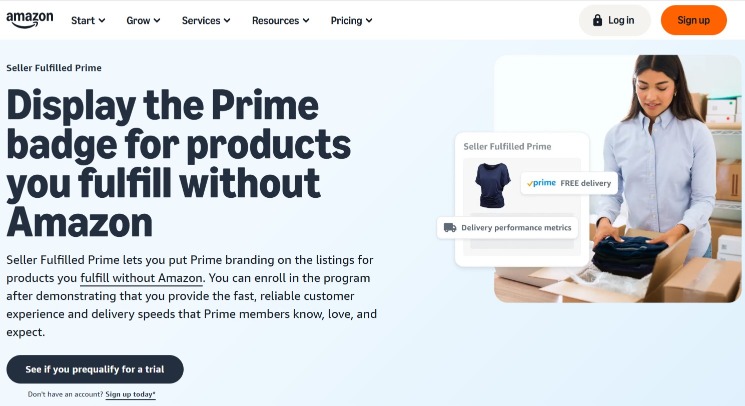
Not only FBM OR FBA, but Amazon also provides Seller Fulfilled Prime (SFP), which enables sellers to provide Prime-eligible items while shipping directly from their facilities, allowing for increased control over inventory, branding, and fulfillment processes without depending on Amazon’s FBA system.
Key benefits include reaching Prime customers, which often boosts sales, maintaining control over shipping and inventory, and evading FBA storage costs.
Moreover, the program entails rigorous prerequisites like same-day processing, nationwide delivery within 1 to 2 days (including weekends), and a 99% on-time shipping rate, posing logistical and financial challenges.
These requirements frequently necessitate substantial investment in infrastructure, external logistics, or decentralized warehouse systems. Although SFP may align well with sellers that possess solid logistics skills or unique products, the program’s complexity and expense render it challenging to maintain without strong operational systems.
List your products
Once your account has been set up, you can start listing your products on the Amazon platform. If you are already an Amazon seller, you can use the tool Building International Listings to cross-list your products in each of the stores in Europe.
And if you are listing on Amazon for the first time, you can match offers with the existing pages or create a new page. Then you will be able to use the same tool and cross-list in Amazon Europe stores.
Also, understand your products need to meet EU safety requirements, which could involve CE marking, REACH compliance, WEEE (Waste Electrical and Electronic Equipment), or RoHS (for electronics), based on the specific category. You must register for VAT in each country where you store goods, and you might need to designate a fiscal representative if you aren’t located in the EU.
Precise labeling, translated product details, and adherence to local consumer regulations are crucial for seamless operations and gaining customer confidence.
Legal requirements
Selling on the Amazon Europe marketplace presents vast opportunities, but adherence to legal requirements is essential.
VAT Registration
The VAT (Value Added Tax) is a consumption tax charged on goods and services in the European Union. Amazon strictly requires VAT registration for FBA sellers and sometimes for FBM sellers as well.
It’s likely that your inventory is being held in several different countries if you are using Fulfillment by Amazon (FBA), particularly programs like Pan-European FBA or Central European FBA.
The VAT Services on Amazon program is one way that Amazon assists in this area. This program helps merchants in European nations with VAT compliance, filing, and registration. It has the potential to greatly lessen the administrative load.
This implies that even if you are not physically present in any of those nations, you might still need to register for VAT. Furthermore, the EU currently mandates that VAT be collected at the point of sale for the majority of cross-border transactions, after a change in regulations in July 2021. Because of this, VAT compliance is much more crucial, particularly if you sell to clients in different EU member states.
The VAT Services on Amazon program is one way that Amazon assists in this area. This program helps sellers in major European nations with VAT compliance, filing, and registration, helping to reduce the administrative burden.
EORI
The EORI (Economic Operators Registration and Identification) serves as an identification tool for the customs authorities to monitor and track the flow of goods across European borders.
Consider the EORI number to be the worldwide trade passport for your business. If you don’t have it, customs can hold up your shipments or, worse, block them altogether. An EORI number is essential for Amazon sellers, particularly those who use Fulfilment by Amazon (FBA).
Customs officers will use your EORI number to trace your imports and make sure you are complying with all legal regulations, regardless of whether your goods are coming into the UK, France, Germany, or Italy.
A single EORI number from a member state of the EU is all that is required, and it is valid across the EU. However, the UK has had its system since Brexit. Therefore, you’ll need two different EORI numbers if you’re importing items into the UK and the EU.
Consumer Protection Laws
The sellers must have a 14-day return and withdrawal policy for their customers, which means the customers are allowed to withdraw their order within 14 days of placing an order.
And once they receive the order, the policy allows the customers to return it within the next 14 days if they face an issue with the quality of the product. If the sellers fail to comply with the policy, then it can lead to account suspension or even Buy Box loss.
Learn more about Amazon return policy for sellers
GDPR Compliance
The GDPR (General Data Protection Regulation) is a mandatory EU law that organizations or companies must maintain confidentiality. The sellers should not use any personal data such as Name, Address, or Phone Number for personal means or any misconduct. It’s important to be as ethical as possible and maintain your brand integrity.
Sellers must disclose how they gather and use personal data under the GDPR. You must have a clear privacy policy, acquire express consent when necessary, and give consumers the option to view, update, or remove their data.
If you use cloud-based products or third-party services (such as email marketing software, analytics, or CRM platforms), you must make sure the providers are also GDPR-compliant.
Failing to comply with the GDPR rules can lead to huge fines, up to €20 million or 4% of your global annual revenue.
Product Compliance & Listing Translation
In the European Marketplace, CE stands for “Conformité Européenne”. It is an essential certification that indicates conformity with safety, health, and environmental protection regulations.
Manufacturers must undergo an assessment confirmation to demonstrate compliance, which may include self-assessment, third-party testing, or a CE certificate.
One of the ways to stand out from the crowd would be creating a good listing. Amazon prefers its listing in Europe to be high-quality, localized, and accurate. Each listing should be based on the specific country. E.g., the product titles and descriptions should be in the local language (German, French, Italian, or Spanish)
Fulfillment Options in Europe
Choosing the right fulfillment option in Europe can make or break your business strategy, influencing everything from logistics and customer satisfaction.
FBA and FBM For Amazon Sellers
Amazon uses FBA in Europe, manages the customer service, returns, shipping, and storage through a network that crosses borders and marketplaces. This lowers operating costs and makes your products eligible for Prime in every nation you service.
However, FBM requires you to handle international shipping, refunds, and local tax compliance on your own, leaving you with less control over fulfillment and possibly lower profits. This complexity can grow rapidly in Europe, since every nation has its own VAT and customs laws.
FBA provides quicker delivery and higher conversion rates, particularly in competitive categories, for the majority of expanding businesses. However, the decision between FBA and FBM frequently comes down to your tax planning approach, logistics setup, and desired level of control over the customer experience.
Pan-European FBA
The most reliable fulfillment service in the EU for Amazon is Pan-European FBA. After you sign up, Amazon automatically divides your inventory among its fulfillment hubs in several European nations according to demand. This lowers cross-border shipping costs, expedites local delivery, and makes your products Prime-eligible throughout the region.
The benefits are obvious: faster delivery, cheaper prices per unit, and increased clientele. A trade-off exists, though, as signing up for Pan-EU FBA necessitates registering for VAT in each nation where your inventory is kept.
This may require maintaining compliance across five to seven countries while simultaneously handling VAT requirements in each of them. Without a robust tax administration system or assistance from VAT experts, this could pose a significant operational challenge for sellers.
European Fulfillment Network (EFN)
The European Fulfillment Network (EFN) enables you to fulfill orders from a single Amazon fulfillment center across various EU marketplaces while keeping inventory in one location, usually in your marketplace.
Without committing to multi-country VAT registration or dividing your goods across the continent, EFN is therefore a less risky approach to test the waters in Europe. If you are headquartered in Germany and keep all of your inventory there, for instance, you can still use EFN to fulfill orders in France, Italy, or Spain.
Amazon continues to manage the logistics and provide a consistent customer experience. In contrast to local fulfillment, cross-border transportation costs and lengthier delivery periods may lessen competitiveness. For suppliers that are new to the European market and wish to reduce complexity while still working at different marketplaces.
Multi-Country Inventory (MCI)
Amazon offers Multi-Country Inventory (MCI) as an alternative to Pan-EU automation for sellers who prefer more control over the location of their inventory. You can decide which certain nations you wish to ship inventory to and keep items in those countries when you work with MCI.
Amazon then uses the closest warehouse in that nation to fulfill orders, providing quick local delivery akin to Pan-EU FBA. You have control over where inventory travels, which is what sets MCI apart.
This helps with strategic VAT exposure management. Although you are not obliged to distribute products worldwide, you will still need to register for VAT in each nation where you keep inventory. You can keep inventory in Germany and France only if you know that is where your demand is higher.
Logistics and Shipping
If you want to start or expand into Amazon Europe, you will need to reconsider your logistical plan. Getting goods into the EU is only the first step; maintaining your competitiveness requires working with the best shipping companies, moving inventory effectively, and following the customs laws.
Importing goods into the EU
It takes more than just delivering goods to a fulfillment center to get them into the European Union. You must make sure that EU customs, VAT laws, and product quality are followed as an importer.
You will need a current EORI number and a business invoice with product values, descriptions, and HS codes before your products ever pass customs.
CE marks or other certifications are also necessary for many products marketed in Europe. Customs may delay or refuse the shipment entirely if your items don’t match legal requirements. Therefore, having your compliance paperwork ready before shipment is crucial.
Partnering with freight forwarders
The majority of Amazon sellers don’t manage their shipping, and that comes with good reason. From collecting the units from the factory to delivering them to Amazon’s fulfillment center, freight forwarders make the process easier.
Customs clearance, tariffs, air or ocean freight, and occasionally even inland delivery inside Europe are all handled by a freight forwarder.
By selecting a freight forwarder with significant experience, preferably one who is aware of Amazon FBA standards, you can lower the risk of customs problems and avoid delays. In order to simplify the arrival of your shipments, some forwarders even provide DDP (Delivered Duty Paid) service, which involves paying all import taxes and duties upfront.
Amazon’s partnered carriers
Through the Amazon Partnered Carrier Program (PCP), shipping directly to Amazon fulfillment centers in Europe can be more efficient. Sellers can schedule shipments through this program at a discounted rate using carriers that have been approved by Amazon.
For small to mid-sized shipments going to Amazon warehouses from within Europe or the UK, it is very helpful.
Although PCP does not work as a substitute for freight forwarding in international shipments, it is the best option for handling returns and handling inventory inside Europe. It offers streamlined labeling, tracking, and customs documentation processes and interacts hassle-free with your Seller Central account.
Customs and duties considerations
In order to maintain hassle-free operations and legal compliance when selling on Amazon Europe, customs and duty rules are essential. Products that are imported from outside the EU must first pass customs clearance before being shipped to customers or kept in an Amazon FBA warehouse.
This includes setting up VAT (Value Added Tax), declaring the products, and paying import charges according to the appropriate Harmonized System (HS) code.
According to the Customs Union agreement, once passed, products are free to move around the EU, removing the need for extra customs inspections between member states. Nonetheless, VAT remains a crucial consideration, particularly when utilizing Amazon’s Pan-European FBA platform, which keeps inventory across several nations.
Pricing Strategy & Currency Management
Listing your goods on Amazon Europe is not enough; you also need to price them appropriately for a variety of markets and currencies while making a profit. Managing currency translation and keeping competitive pricing throughout Amazon’s EU marketplaces (UK, Germany, France, Italy, Spain, and more) will be one of your toughest difficulties when venturing into Europe.
Let us break it down.
The Currency Conversion Challenge
When you sell in Europe from outside the EU (especially from the U.S.), your earnings are subject to currency exchange rates and conversion fees. Each Amazon EU marketplace operates in its native currency:
Germany, France, Italy, Spain, Netherlands, Poland – Euro (EUR)
UK – British Pound (GBP)
Sweden – Swedish Krona (SEK)
Here is what you should watch for:
Volatile exchange rates
These can disrupt your profits daily if not managed actively.
Foreign transaction fees
Banks and processors often charge a percentage on each international sale or payout.
Amazon disbursement losses
If you are using Amazon Currency Converter, you are likely paying a fee you don’t even realize. Consider using a multi-currency account to hold funds in local currencies and convert only when rates are favorable.
Using Amazon Currency Converter for Sellers (ACCS)
Amazon’s Currency Converter for Sellers is a convenient way to receive disbursements in your currency when selling internationally. It’s automatically enabled if your bank account is in a different currency than the marketplace you’re selling in.
Marketing and Advertising (Amazon European Geos)
The next crucial step in building your brand on Amazon Europe is marketing, which varies depending on the nation, after you have listed your products and optimized your pricing. Localizing your advertising, promotions, and consumer engagement is essential for success.
Let’s understand what makes marketing in Amazon’s European markets both a challenge and an opportunity, as well as how to effectively manage it.
Running Amazon Ads in Different Countries
Running Amazon Sponsored Ads (PPC) across multiple European marketplaces isn’t just a strategy. Each country has different consumer behavior, search volume, keyword trends, and competition levels.
Key considerations
Language
You will need to localize your ad copy and keyword targeting for each marketplace. German shoppers search differently from French or Italian buyers.
CPC varies by country
Cost-per-click in Germany might be lower than in the UK or higher than in Spain, depending on the niche.
Separate ad budgets
Amazon doesn’t let you run one campaign across all EU countries. You’ll need to create individual campaigns per country, with dedicated budgets and tailored keywords.
Cultural context
A headline that works in the US may not resonate in France or the Netherlands. Localization isn’t just translation, it’s adaptation.
The Importance of Reviews and Localized Customer Service
Social proof drives sales in every country, but the way customers leave reviews may vary.
Reviews
European customers are more review-conscious than U.S. shoppers. In countries like Germany and the UK, a product without reviews is less likely to convert.
Use programs like Amazon Vine to generate early reviews in new markets, especially when launching in languages other than English.
Customer Service
Amazon requires sellers who use FBM (Fulfilled by Merchant) to provide customer service in the buyer’s local language.
Even for FBA sellers, offering localized support can improve seller feedback, lead to higher conversion rates, and attract repeat customers. If you’re scaling across several EU countries, consider using Multilingual customer service platforms (e.g., Zendesk with native-speaking agents)
Final Thoughts
Selling on Amazon Europe presents one of the most potent growth prospects for e-commerce companies seeking to go global. Although there is a lot of potential due to the availability of highly sought-after markets, a wide range of clientele, and comparatively less competition in some areas, listing your goods overseas is not enough to achieve success.
The good news? Mastering every market overnight is not necessary. Prior to growing further, start with one or two nations, understand the purchasing habits of local customers, and improve your systems. Keep trying what works, have patience, and commit to making every step better.
That is where SellerApp can help you.
We help sellers navigate cross-border expansion with confidence by:
Optimizing listings for each European marketplace
Driving scalable PPC growth
SellerApp is your partner in creating a successful, scalable global Amazon business, regardless matter whether you are targeting your first European market or growing across all of the EU’s largest marketplaces.


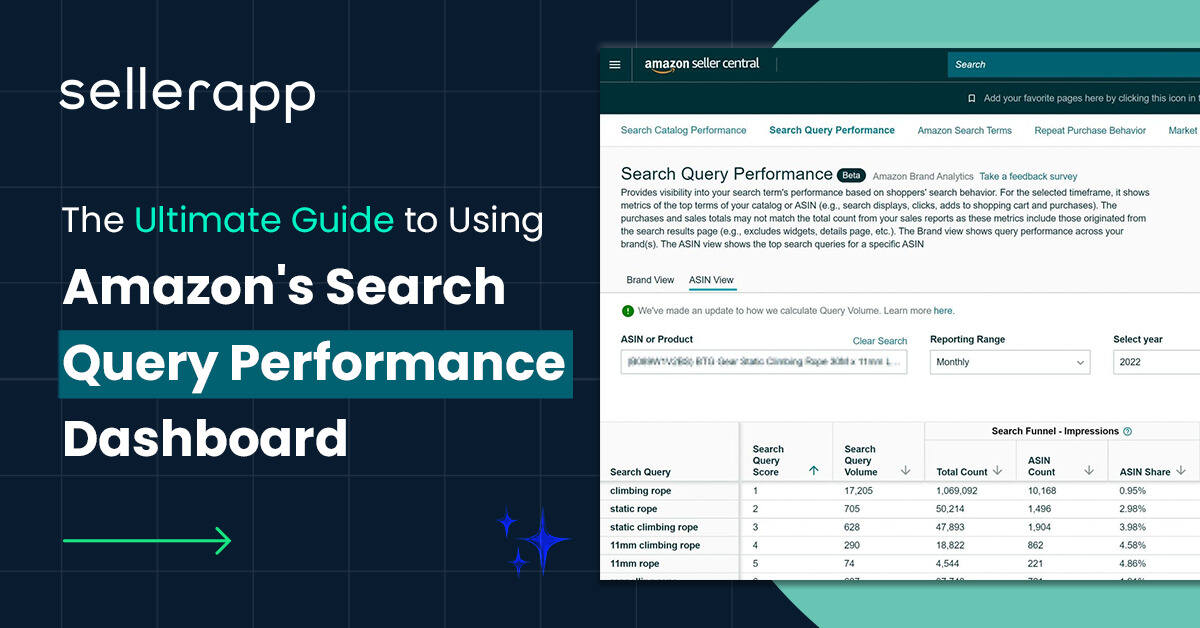



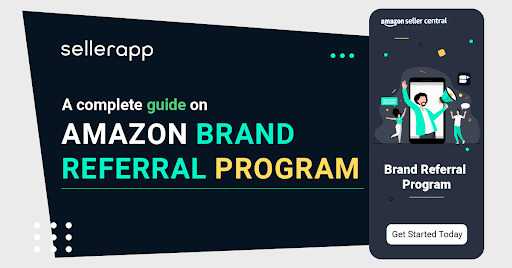
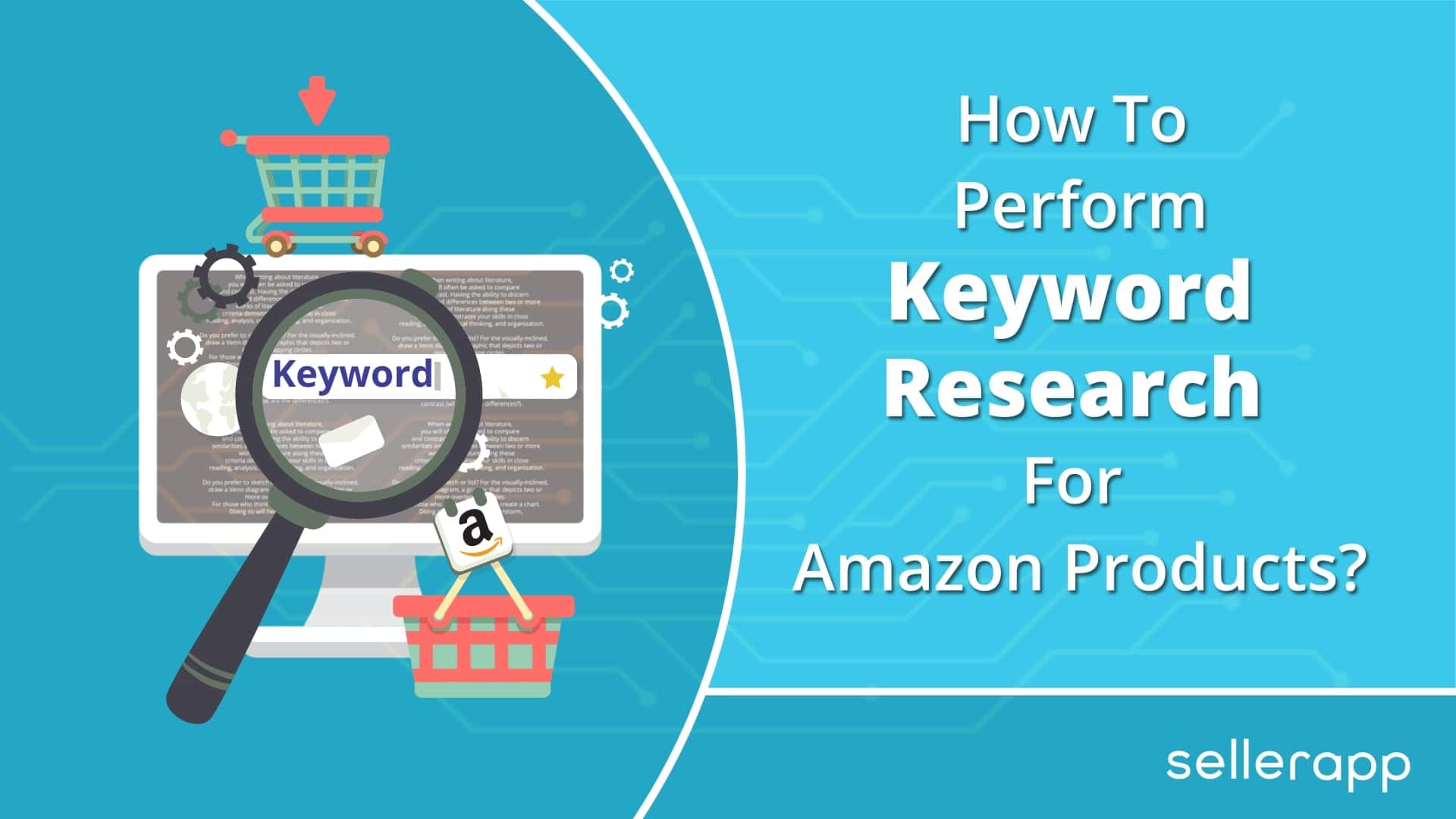


Lavill Dow
July 29, 2025Really well explained! The part about European customers being more review-conscious than US shoppers is so important – explains why my products weren’t converting well initially.
Lucky Bandit
July 30, 2025This is a lifesaver, honestly! I was completely lost on the VAT Services on Amazon program – didn’t even know it existed and it sounds like it could save me tons of admin work.